Garlic is an English word that originated from the Welsh language “garlleg”. It is a hardy perennial and flowering plant. It belongs to the onion family but is different from onion as it has multiple cloves rather than a single bulb. Usually, it produce from July to September with pollination by moths, butterflies, and bees.
China garlic can easily cultivate in a mild climate and it covers very little space. Garlic originated in Central Asia, however now it does cultivate worldwide. Nowadays garlic does cultivate in major areas of Central Asia including Uzbekistan, Kyrgyzstan, Turkmenistan, and Tajikistan. Garlic used to grow wild over a considerably greater area in the past, and wild garlic existed anywhere from India to China to Ukraine to Egypt. China is the top garlic producer, with 76% of total world garlic production in 2019.

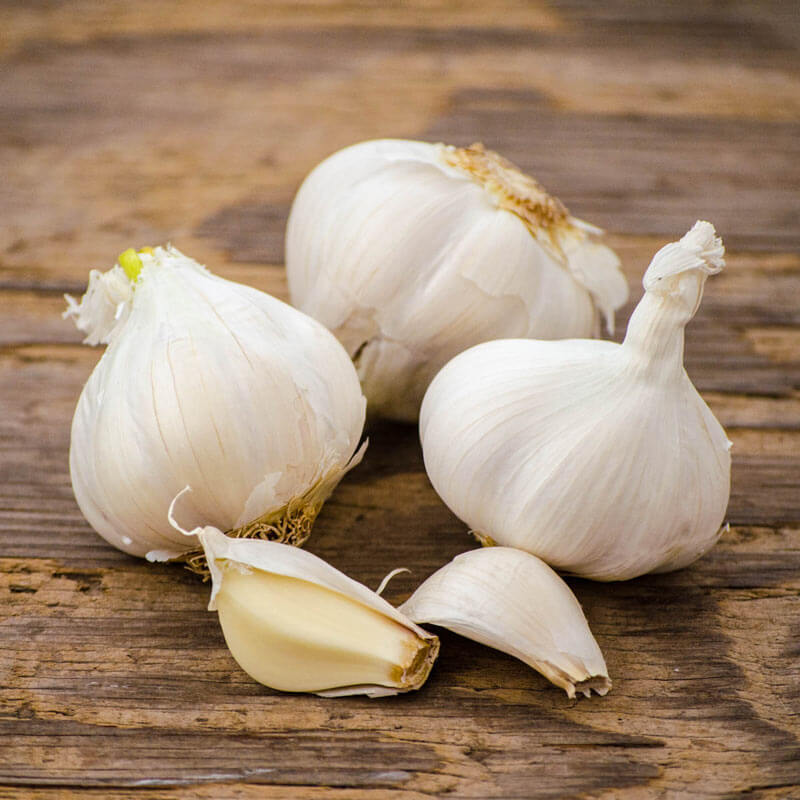
Origin of China Garlic
Where China garlic first originated?
Garlic has a longstanding history. Some studies show that the first garlic originated in China 4000 years ago. It can also believe to have originated in Central Asia and has been grown in the Mediterranean for about 5,000 years ago.
China garlic is one of the earliest farming crops. It mentions 5000 years ago in Egyptian and Indian cultures, and its uses widely by the Babylonians and the Chinese several thousand years ago. Garlic has been farmed in Mesopotamia for about 4,000 years and it does use in Egypt and China for thousands of years.
The area that can cultivate wild garlic without human intervention is known as the center of origin, and it has existed for many years. Humans traveling and migrating through Central Asia and adjacent areas have harvested wild garlic and transported it with them for subsequent consumption and cultivation throughout history.
How it is called in different regions?
Allium Sativum is the scientific name of garlic, commonly known as garlic worldwide. However, it has different names in different countries based on their languages. It is primarily due to linguistic differences and is rooted in their culture. European call garlic as a Garlleg, Alo, Cesnak, and Aglio. It pronounces as a Lehsan, Thom, and Sarmsaq in Asia. It is known as Thawm in Arabic.
Different species of China garlic?
China garlic comes in a variety of species and it has three categories based on color.
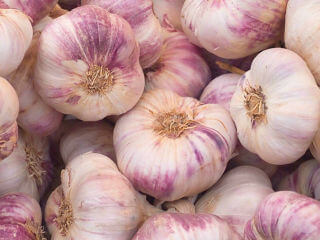
Purple garlic:
Purple garlic first originated in Italy and was exported to the United States in the 20th century. This Purple Garlic comes from a type of garlic known as hard neck garlic, which has a woody stem that runs through the middle of each bulb. Purple garlic has a purple-colored papery skin, yet the interior cloves are the white in color as common garlic cloves. Purple garlic is naturally juicier with a lighter flavor than white garlic.

China garlic images
White garlic:
The most common type of garlic is white garlic. White garlic bulbs come in a variety of sizes and forms, with larger cloves on the outer and smaller cloves in the center. It comes from a type of garlic known as soft neck garlic, which has a stem that does not grow through the middle of the bulb.
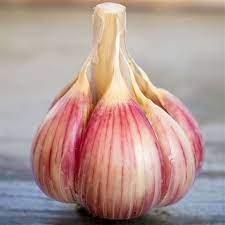
China garlic images
Red garlic:
The Republic of Georgia, which is the southern part of Russia is home to red garlic. In 1988, Peter Hanelt collected it. The bulbs of Red garlic are huge and flattened, with 12 to 18 cloves aligned in numerous layers. The outer bulb wrappers are papery, thick, and white, with vertical pink and red streaks going down the sides.
What were the first uses of China garlic?
China fresh Garlic was already found in Greek temples and Egyptian pyramids for many years in history. Garlic does also mention in the Bible. Ancient medical literature from China, Greece, Egypt, India, and Rome all recommended the use of garlic for medicinal purposes. Chinese Garlic was probably one of the first “performance enhancing” substances given to the first olympic competitors in Greece.
Chinese Garlic can give to laborers in various civilizations as a powerful medicine to give them stamina and enhance their workability. Hippocrates, a revered physician also prescribed garlic for a variety of ailments. Garlic does grow practically everywhere by the end of the first millennium of the Common Era (1000 AD). And it did universally recognize as a desirable plant from a medical, nutritional, and even spiritual standpoint.
Garlic uses in ancient times due to its flavor and medicinal effect in food and different medicines. Red Garlic appreciated across many civilizations for its diverse culinary applications and tremendous health advantages for thousands of years.
Garlic is the most commonly used spice in different cuisine, ranging from monosodium glutamate (MSG) to desserts. It does even include foot salve because it has been thought to have medical healing properties.
Garlic is rich in nutrition:
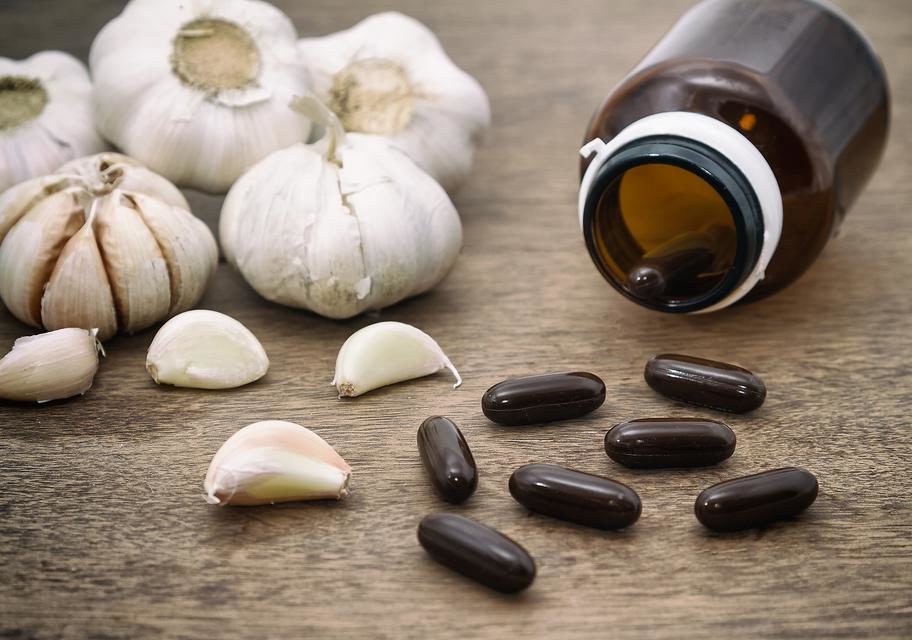

Garlic is one of those foods that people also like and dislike. Garlic’s strong, pungent flavor complements a variety of savory meals, and it uses in traditional cuisines all around the world. A raw garlic clove (3g) has 4.5 calories, carbohydrates (1 gram), protein (0.2 grams), and fat (0 gram). Vitamin C, zinc, and calcium all are present in garlic.
Garlic has powerful medicinal value
Garlic uses widely in history for medical purposes. Garlic’s bioactive components, such as saponins, sulfides, polysaccharides, and phenolic compounds are thought to have medicinal potential.
The active compounds in garlic can lower blood pressure
Traditionally garlic uses as a home remedy for many diseases and it is highly effective for certain diseases. Garlic is also effective for hypertensive and Alzheimer’s patients. It may help decrease blood pressure in part by increasing nitric oxide production.
Garlic lowers the risk of cardiac disease:
Garlic’s phytochemical and nutritional qualities can considerably reduce the risk of myocardial infarction, hypertension, atherosclerosis, diabetes, hyperlipidemia, and ischemic stroke.
Garlic treats Alzheimer disease:
Garlic has antioxidant properties as it slows down the process of aging.
The antioxidant qualities of garlic as well as the combined impact on lowering blood pressure and cholesterol may lessen the risk of major brain disorders including Alzheimer’s disease and dementia.
Garlic can improve bone health
Garlic’s capacity to reduce bone loss via boosting estrogen in females is responsible for its positive benefits on bone health. A daily intake of garlic extract reduced estrogen deprivation. It has also been proven to aid in the treatment of osteoarthritis, which defines as the degradation of joint cartilage.
Garlic can make food more delicious
Garlic can help you stick to a healthy eating or weight-loss plan. Because it is so flavorful, a small bit can give your food a great savory flavor without adding fat or calories. China garlic can also use as a salt substitute if you are trying to cut back on salt but want food that tastes good.
How was garlic first introduced to China?
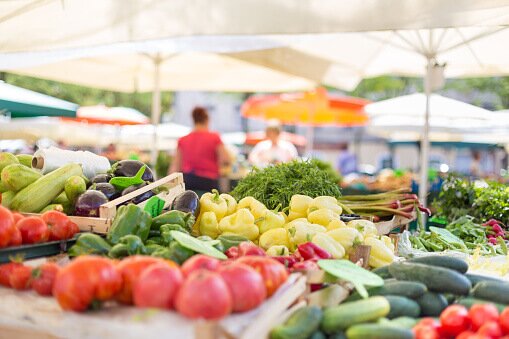
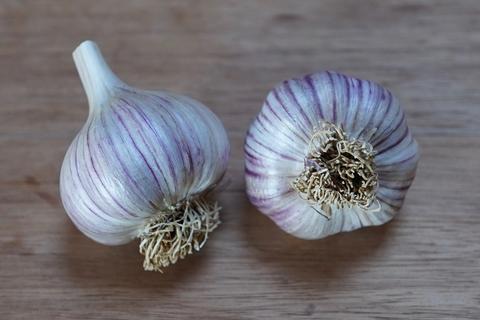
Garlic reference in the Chinese calendar, which dates from 2000 BCE. Its cultivation in China is thought to have occurred around the same time as in ancient Mesopotamia. The ancient Chinese, who utilized it in Chinese traditional medicine to treat diarrhea and stomach trouble among other diseases, discovered garlic’s significant antimicrobial properties.
Chinese garlic exports became the world’s largest producer climbing from 128,239 tonnes to 383,860 tonnes between 1992 and 2000.
Areas of China that are suitable for garlic growth:
China fresh Garlic survives in climates with a temperature range of 12 to 24 degrees Celsius. Garlic grows well in the good drain and sunny areas.
Shandong, an eastern coastal province to the south-east of Beijing, produces the majority of China’s garlic. Especially Jinxiang – the “Garlic Capital of the World”. Garlic is growing on more than 5 million mu in China, accounting for more than 85% of global production. It is mainly growing in Shandong, Jiangsu, Hebei, Henan, and Yunnan, with a small amount, also producing in Xinjiang and Gansu in the east. Furthermore, they can widely plant garlic in provinces with suitable climates. But it primarily cultivates self-sufficiency or supply to nearby market cities.
Garlic production in China:
China is producing the best quality of garlic with innovative cultivation techniques.
Chinese garlic is growing on healthy, loose-sand soil with sufficient drainage. The best time to plant seeds is between mid-August and mid-September. Garlic cloves grade from small to large for garlic sprouts to grow uniformly. The spacing between each column and row does 10x15cm, and the depth of the China garlic cloves in the soil does just enough to cover the seeds. After seedling, a suitable fertilizer and soil mixture is used. Water apply regularly, later on, to keep the soil moist and assist the sprouts to grow. The time it takes for seedlings to emerge is usually only 10-15 days.
Usually, China garlic seed plants before the middle of August generate green garlic sprouts. Seeds can plant at the end of August or the beginning of September for growing garlic bulbs and stems. China uses well-compressed fertilizer for growing garlic. As China fresh garlic needs a major amount of fertilizer. Be sure to apply sufficient base fertilizer before planting. Plowing does use to make the land smooth and flat by using a rake. Small plots of about 1.4m wide can create by using this raked soil. A dissolved form of prometryn powder in clean water can use to get rid of weed before sowing. After sowing, drainage and fertilization is the most important step, that farmer follows regularly.
As soon as the sprouts reach a height of 3-5cm, the top dressing begins. Each small plot applies 1000g of well-compressed fertilizer every 15 days. This type of spreading is lasting three to four times. After 2 months of sprouting, farmers begin collecting green garlic sprouts regularly until March. Each month, this can expect to receive more than 1000g of green sprouts. The farmer prepares one top dressing every time they collect green sprouts. To improve the garlic stem and bulb growth, they prepare a large spread of 15 kg fertilizer accompanied by water pouring between early March and late March.
Leaf blight, white rot, and purpura are the most common garlic infections. Once the infection is suspect, farmers use 50% carbendazim or 70% thiophanate methyl combined in water to pour into the ground. Onion thrips, garlic maggots, and other pests are common garlic pests. To prevent garlic maggot, the farmer pours a 50 % phoxim 500 times solution over the roots. To prevent onion thrips, farmers apply 80% DDVP 40% or dimethoate.
From April through June, when garlic bulbs begin to expand, farmers apply fertilizers and water as needed until the garlic bulbs reach the end of their growth cycle. Then, to avoid open bulbs caused by rotten garlic skin, they pay attention to field drainage. Then they harvest the garlic stems once the leaf sheath grows by 10cm. Farmers may pick about 200kg of garlic stems per mu. When the garlic leaves have wilted and yellowed, pick a sunny day and lift the entire stool off the ground, bundle them into beams, and hang them in a shady and cool location until they are ready to sell.
There are different months to collect different parts of China garlic. Green garlic sprouts can usually harvest between October and March of each year. China fresh garlic stems are available from March through April. Between April and May, garlic bulbs can be collected.
How China stocks garlic:
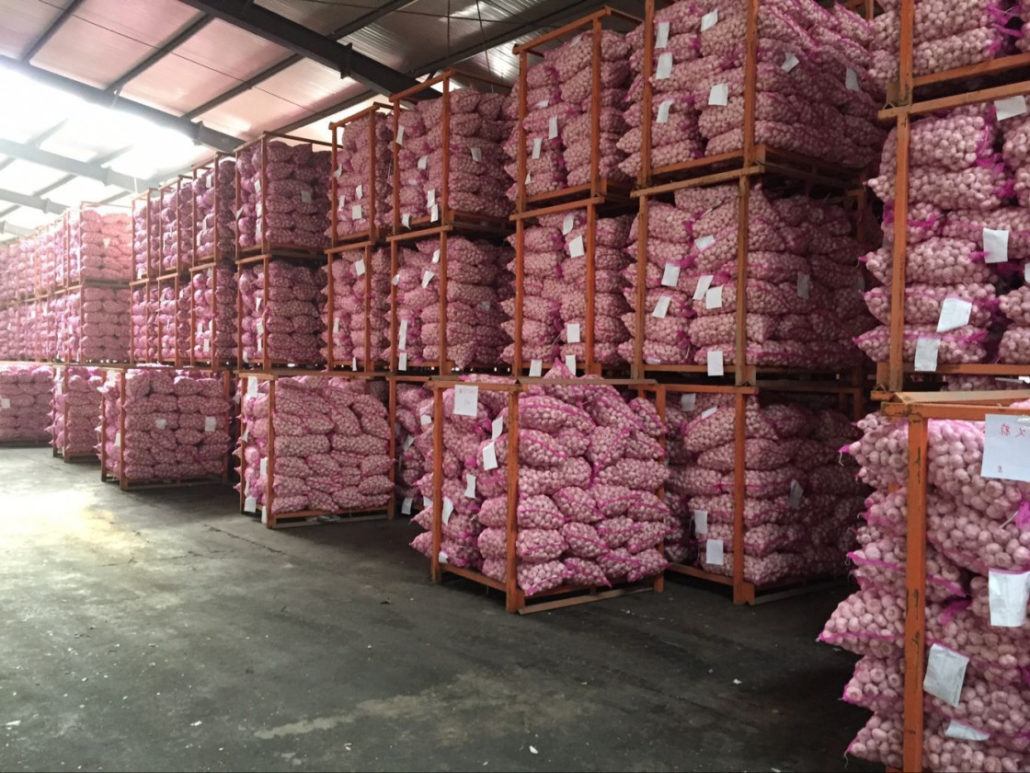
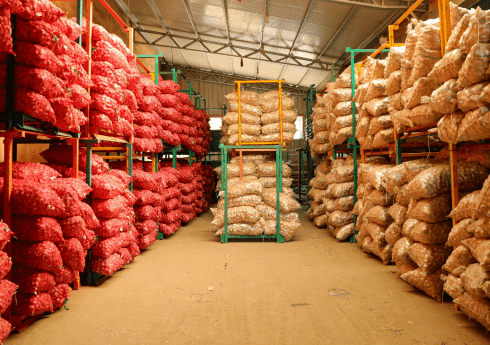
China grows more garlic than anyone else does, exporting twice as much as the rest of the world combined. China has a long history of shipping high-quality garlic and storing it properly to avoid faulty germination or burnt garlic.
After harvest, China garlic can divide into three categories: visually appealing garlic, which accounts for about 60% of the total, 20% of the garlic does save as seed for planting the following year, and the rest does process into dehydrated garlic products. A collector buys the dehydrated garlic and sells them to a more prominent distributor. The Chinese garlic will then place on an open-air wholesale garlic market floor and awaits sale.
Growing, harvesting, transporting, and storing garlic in China is simple but strictly supervised. China garlic might receive a thermal burn from time to time. It has also known as roasted garlic or waxed garlic. This is due to the China fresh garlic being exposed to too much sunlight or being kept at too low a temperature in the cold storage. However, modern techniques can keep food fresh for up to two years, giving investors more time to sell.
Autumn is also when new China fresh garlic can plant for the next year, and prices might change depending on a variety of circumstances at this key time of year. In September, garlic suppliers begin placing garlic in cold storage. This prevents the garlic bulbs from sprouting and facilitates sales throughout the winter and spring.
Garlic harvesting season in China’s Henan and Shandong provinces occurs around June. From June until the end of August in north China, it is safe to store garlic outside in cold storage because the outside temperature is high, exceeding 25 degrees Celsius. However, because the temperature in south China is greater than in the north, garlic can still export outside cold storage from south China after the end of August for around 1-2 months. However, if garlic does send from Qingdao in northern China. It must utilize cold storage or refrigerated garlic after the end of August to ensure that the germination does not transfer. Because reefer containers generally set the temperature at -3 C or 27 F, china is using reefer HQRF containers, which protect garlic against humidity damage and sprouting.
Garlic skin is already dry and proper ventilation require to keep the garlic fresh. Therefore, reefer containers can use to safely transport the garlic to other countries. However, once the China fresh garlic is unloading from the reefer containers, it stacks in a well-ventilated area. Stack them loosely rather than tightly. An electric fan can use to blow wind on them for proper ventilation.
Garlic has a germination process that occurs within days. Chinese garlic with an extended germination period on the inside has no commercial value. To prevent germination, garlic is typically stored at temperatures ranging from 27° to 32° Fahrenheit (-3° to 0° Celsius). The China garlic will not germinate internally at this temperature.
Garlic germination accounts for only 10% of the total garlic clove section length at harvest. This can maintain for three months without major changes. It will not go bad in transportation to your destination if the HQRF container is always plugged in with electricity and kept at the appropriate temperature and humidity.
We keep our garlic in our cold storage warehouse after August to prevent germination. We are trying to additionally install an independent Ryan temperature recorder inside the container if necessary to keep track of the temperature chart during transit with a cost of 30$ on each. And we are thinking of securely shipping the garlic in one door open 20’ FCL dry container to destination ports in Asian countries during the summer to economize on sea transport.
Global garlic is mainly imported from China:
China is one of the world’s largest exporters of garlic, accounting for around 80% of all garlic exported worldwide. To promote and increase production, Chinese farmers utilize fertilizers and treat their garlic with ingredients that are essential for good growth. Furthermore, it proved that Chinese garlic is not bleached. The garlic you are eating is most likely China fresh garlic.
According to a second report from FreshPlaza.com, the quality of Chinese garlic is high. However, Chinese purple-skinned garlic does generally low compared to garlic from other countries. As a result, demand for Chinese garlic from other countries remains strong.
In 2018, the United States imported roughly 199 million pounds of fresh garlic and 155 million pounds of dried garlic from China, according to UN Comtrade data. According to the Australian Garlic Producers Association, 95% of garlic in Australia comes from China.
Rumors about Chinese garlic:
China has been producing and exporting high-quality garlic to the rest of the world for many years. China packs garlic in its processing facilities, ensuring the highest quality of products through stringent quality standards and good management. Chinese always provides the highest quality products at the most competitive pricing when it comes to garlic.
There are some rumors that the Chinese are producing bad garlic through improper processing, bleaching, and wetting. Chinese garlic comes in many different varieties, each of which is produced for a specific purpose. It produces under strict supervision in an arid area with sufficient drainage and fertilizer. As a result, China is the leading manufacturer and exporter of garlic in the world.
We can dedicate ourselves to providing high-quality garlic with exceptional service. Our items are exporting all over the world and have gotten positive feedback from customers. Excellent service, fast delivery, reasonable pricing, and client loyalty are the most significant factors in our success.
We export China garlic with or without roots, depending on your preferences. We guarantee that our garlic will not sprout during shipment. And we use new shipping processes to ensure that garlic transported from China to the United States is 99 percent fresh. Our garlic exports are strictly following safety and hygiene testing in the United States.
We have a particular garlic-planting base that is rich in nutrients and devoid of pollutants. We have excellent equipment and a favorable atmosphere for growing garlic, and all of our garlic grow without pesticides.
